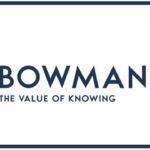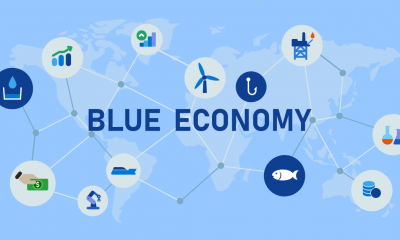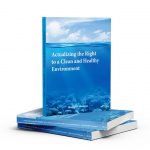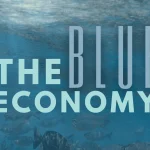By Hon. Prof. Kariuki Muigua, OGW, PhD, C.Arb, FCIArb is a Professor of Environmental Law and Dispute Resolution at the University of Nairobi, Member of Permanent Court of Arbitration, Leading Environmental Law Scholar, Respected Sustainable Development Policy Advisor, Top Natural Resources Lawyer, Highly-Regarded Dispute Resolution Expert and Awardee of the Order of Grand Warrior (OGW) of Kenya by H.E. the President of Republic of Kenya. He is the Academic Champion of ADR 2024, the African ADR Practitioner of the Year 2022, the African Arbitrator of the Year 2022, ADR Practitioner of the Year in Kenya 2021, CIArb (Kenya) Lifetime Achievement Award 2021 and ADR Publisher of the Year 2021 and Author of the Kenya’s First ESG Book: Embracing Environmental Social and Governance (ESG) tenets for Sustainable Development” (Glenwood, Nairobi, July 2023) and Kenya’s First Two Climate Change Law Book: Combating Climate Change for Sustainability (Glenwood, Nairobi, October 2023), Achieving Climate Justice for Development (Glenwood, Nairobi, October 2023) and Promoting Rule of Law for Sustainable Development (Glenwood, Nairobi, January 2024)*
The Nairobi Stock Exchange (NSE) ESG Disclosures Manual (ESG Manual) defines value creation as “creating (and preserving) financial and societal value for stakeholders by developing strategies that manage material ESG risks and capture related opportunities. Value creation is the next step of ESG reporting after situation analysis and stakeholder engagement and materiality analysis. It entails the listed company developing value creation strategies around risk and opportunity management for assessed material ESG topics. According GRI, three aspects that distinguish value creation, namely, value is created within the context of sustainability, value creations delivers benefits beyond financial gain and value creation is about delivering value to multiple stakeholders.
As it is, material ESG topics invariably present significant business risks and opportunities for organisations and their stakeholders. Therefore, the ESG Manual recommends that Organisations develop value creation strategies around these material topics to ensure that risks are identified, assessed, and managed – and opportunities captured. For example, taking air emissions as the material disclosure, opportunity assessment discloses potential for sustainable investments, trigger of product innovation and revamping the supply chain strategy. At the same time, risk assessment highlights potential strategic risks, financial risks, reputational risks and compliance risks. In terms of performance disclosure, there is need for trend analysis, peer comparison, estimated projected performance and determine the report against criteria, for example the GRI Standards.
Opportunity assessment
The ESG Manual recommends that organisations should identify impacts on future strategy, that is, impacts on future revenues, cash flows and operating costs by emerging trends in ESG, and implement scenario-based solutions that capture new opportunities for stakeholders. In this respect, the ESG reporting team can work with the corporate strategy unit within the Organisation to perform the Organisational SWOT in the context of current and emerging ESG issues. At this stage, the ESG team should also be on the lookout for opportunities to create shared value for the organisation based on the SDGs. For example, to capture climate related opportunities, organisations can raise capital to finance “green projects” through issuance of green bonds that target an increasing number of ESG focused investors. Further, Organisations can also implement energy efficiency programs and invest in renewable energy to cut future energy costs and ensure compliance with emerging climate related regulations. Such approach helps the organisation demonstrate contribution to the SDGs, namely, SDG 13 on Climate Action.
The ESG Manual recommended if necessary that organisations consider justifying ESG related investments by setting an internal price of ESG impacts. For instance, the organization can consider setting an internal price for carbon emissions, water abstraction or use of natural resources that the organisation extracts freely from the environment. This approach facilitates quantitative cost analysis, for example, through discounted cash flow analysis and subsequent justification of investments that mitigate the organisation’s impacts in these areas.
Risk assessment
With respect to risk assessment, the ESG Manual notes that global studies have shown environmental and social related risks are the most significant risks that business leaders are concerned about. In addition, business leaders now globally acknowledge the impact that ESG related risks are likely to have on their strategies and business models. As a starting point, ESG risks can be identified, analyzed, and managed as part of this wider enterprise risk management process as most NSE listed companies have implemented an enterprise risk management framework. The Manual recommends that listed companies seek expert ESG subject matter advise on how to mitigate significant ESG risks. Further, it directs that the organisation continuously evaluate the strategic, financial, operational and compliance risks that it is exposed to relative to its ESG risk profile. For instance, increasing emphasis on climate change mitigation by regulators and investors exposes organisations to non-compliance risks and possible divestment by investors. Human rights issues in the supply chain, whether real or perceived expose organisations to significant reputational risks. It is recommended that the Board be appraised on a regular basis on how the organization is managing these risks.
Performance disclosure
The NSE ESG Manual notes that “performance disclosure on ESG performance demonstrates transparency to stakeholders and a commitment to responsible investment by the Board and Senior management of the reporting Organization.” It recommends that listed companies document a process for collecting, analyzing, and reporting ESG performance data to stakeholders. ESG disclosure/sustainability reports assess prior period (usually financial year) performance of identified material ESG topics within the reporting boundary against set criteria. Hence, the manual provides guidance to listed companies on how to report on a variety of typical material ESG topics in various sectors while applying the GRI Standards. The ESG Manual recommends measurement as the sure way to guarantee management of the attendant ESG issues as what gets measured get managed. As it notes “Organisations that set ESG metrics and implement a system of collecting, analyzing, and reporting ESG performance see improvements in their ESG performance over time.”
This is an extract from Kenya’s First ESG Law Book: Embracing Environmental Social and Governance (ESG) tenets for Sustainable Development” (Glenwood, Nairobi, July 2023) by Hon. Prof. Kariuki Muigua, OGW, PhD, Professor of Environmental Law and Dispute Resolution, Senior Advocate of Kenya, Chartered Arbitrator, Kenya’s ADR Practitioner of the Year 2021 (Nairobi Legal Awards), ADR Lifetime Achievement Award 2021 (CIArb Kenya), African Arbitrator of the Year 2022, Africa ADR Practitioner of the Year 2022, Member of National Environment Tribunal (NET) Emeritus (2017 to 2023) and Member of Permanent Court of Arbitration nominated by Republic of Kenya and Academic Champion of ADR 2024. Prof. Kariuki Muigua is a foremost Environmental Law and Natural Resources Lawyer and Scholar, Sustainable Development Advocate and Conflict Management Expert in Kenya. Prof. Kariuki Muigua teaches Environmental Law and Dispute resolution at the University of Nairobi School of Law, The Center for Advanced Studies in Environmental Law and Policy (CASELAP) and Wangari Maathai Institute for Peace and Environmental Studies. He has published numerous books and articles on Environmental Law, Environmental Justice Conflict Management, Alternative Dispute Resolution and Sustainable Development. Prof. Muigua is also a Chartered Arbitrator, an Accredited Mediator, the Managing Partner of Kariuki Muigua & Co. Advocates and Africa Trustee Emeritus of the Chartered Institute of Arbitrators 2019-2022. Prof. Muigua is a 2023 recipient of President of the Republic of Kenya Order of Grand Warrior (OGW) Award for his service to the Nation as a Distinguished Expert, Academic and Scholar in Dispute Resolution and recognized among the top 5 leading lawyers and dispute resolution experts in Band 1 in Kenya by the Chambers Global Guide 2024 and was listed in the Inaugural THE LAWYER AFRICA Litigation Hall of Fame 2023 as one of the Top 50 Most Distinguished Litigation Lawyers in Kenya and the Top Arbitrator in Kenya in 2023.
References
Adams, C.A., Alhamood, A., He, X., Tian, J., Wang, L. and Wang, Y. (2021) The Double-Materiality Concept: Application and Issues, published by the Global Reporting Initiative (GRI) as a White Paper, Available at: https://www.globalreporting.org/media/jrbntbyv/griwhitepaper-publications.pdf (accessed on 21/07/2022)
Capital Markets Authority., Code of Corporate Governance Practices for Issuers of Securities to the Public in 2015, Legal Notice No. 1420.
Cedric.R., ‘Accountability of Multinational Corporations for Human Rights Abuses.” Utrecht Law Review 14.2 (2018): 1-5.’
CFI, ESG (Environmental, Social and Governance), Available at: https://corporatefinanceinstitute.com/resources/knowledge/other/esg-environmental-socialgovernance/ (accessed on 21/07/2022).
Create Research, “Passive Investing 2021: Rise of the social pillar of ESG,” Available at: https://cdn.efundresearch.com/files/RcfPdrQdAaVI9tiBgrgLq4baO7Wciz6eepZTODEO.pdf (accessed on 21/07/2022).
De Francesco. A.J., ‘The impact of sustainability on the investment environment.’ Journal of European Real Estate Research (2008).
Erkens. D.H, et al Corporate governance in the 2007–2008 financial crisis: Evidence from financial institutions worldwide.” Journal of corporate finance 18.2 (2012): 389-411.
European Commission ‘Guidelines on Non-Financial Reporting’, available at https://ec.europa.eu/info/publications/non-financial-reporting-guidelines_en (accessed on 21/07/2022).
Fonseca.A et al., ‘Sustainability reporting among mining corporations: a constructive critique of the GRI approach.” Journal of cleaner production 84 (2014): 70- 83.’
Global Reporting Initiative., ‘ESG Standards, Frameworks and Everything in Between’ available at https://www.globalreporting.org/media/jxkgrggd/gri-perspective-esgstandards-frameworks.pdf (accessed on 21/07/2022).
GRI., ‘The Global Standards for Sustainability Reporting’ available at https://www.globalreporting.org/standards/ (accessed on 21/07/2022).
Mariarosaria. S & Scarpato. D ‘Sustainable Consumption: How Does Social Media Affect Food Choices?’ Journal of Cleaner Production 277 (2020): 124036.
Martin.C et al., ‘Corporate governance and the 2008–09 Financial Crisis.” Corporate Governance: An International Review 19.5 (2011): 399-404.
Muigua. K., ‘What are the Material Issues for ESG Reporting in Kenya?’ available at https://thelawyer.africa/2022/06/05/material-issues-for-esg-reporting-in-kenya/ (accessed on 21/07/2022).
Muigua.K., ‘Introduction to ESG (Environmental, Social and Governance) available at https://thelawyer.africa/2022/02/04/esg-environmental-social-and-governance/ (accessed on 22/07/2022).
Nairobi Securities Exchange, ‘ESG Disclosures Guidance Manual’, available at https://sseinitiative.org/wp-content/uploads/2021/12/NSE-ESG-Disclosures-Guidance.pdf (accessed on 21/07/2022).
Norton Rose Fulbright, “Environmental, Social and Governance,” Available at: https://www.nortonrosefulbright.com/en/services/203f40d1/environmental-social-andgovernance-esg (accessed on 21/07/2022).
OECD (2021), ESG Investing and Climate Transition: Market Practices, Issues and Policy Considerations, OECD Paris, https://www.oecd.org/finance/ESG-investing-andclimatetransition-Market-practices-issues-and-policy-considerations.pdf (accessed on 21/07/2022).
OECD., ‘Environmental Social and Governance (ESG) Investing’ available at https://www.oecd.org/finance/esg-investing.htm (accessed on 21/07/2022).
Ojiambo, S., “Leadership of the UN Global Compact: Message of CEO and Executive Director,” Available at: https://www.unglobalcompact.org/about/governance/executive-director (accessed on 21/07/2022).
RL360, “Governance-The G in ESG,” Available at: https://www.rl360.com/row/funds/investment-definitions/g-in-esg.htm (accessed on 21/07/2022).
Ruth.J., ‘The Convergence of Financial and ESG Materiality: Taking Sustainability Mainstream.” American Business Law Journal 56.3 (2019): 645-702.’
Standard Chartered Singapore, “The S in ESG,” Available at: https://www.sc.com/sg/wealth/insights/the-s-in-esg/ (accessed on 21/07/2022).
Stuart. L.G et al., ‘Firms and social responsibility: A review of ESG and CSR research in corporate finance.’ Journal of Corporate Finance 66 (2021): 101889.
The Financial Times Lexicon, Available at: https://markets.ft.com/glossary/searchLetter.asp?letter=E (accessed on 21/07/2022).
United Nations, Department of Economic and Social Affairs, ‘Sustainable Development’ available at https://sdgs.un.org/goals (accessed on 21/07/2022).





 Lawyers2 years ago
Lawyers2 years ago
 News & Analysis3 years ago
News & Analysis3 years ago
 News & Analysis3 years ago
News & Analysis3 years ago
 Lawyers2 years ago
Lawyers2 years ago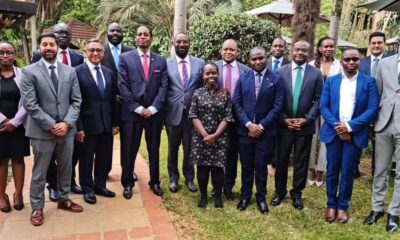
 News & Analysis3 years ago
News & Analysis3 years ago
 News & Analysis1 year ago
News & Analysis1 year ago
 News & Analysis3 years ago
News & Analysis3 years ago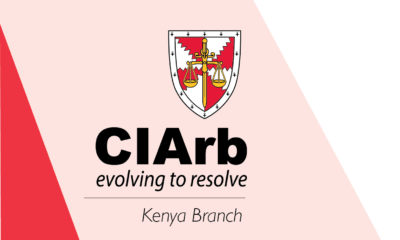
 News & Analysis1 year ago
News & Analysis1 year ago

